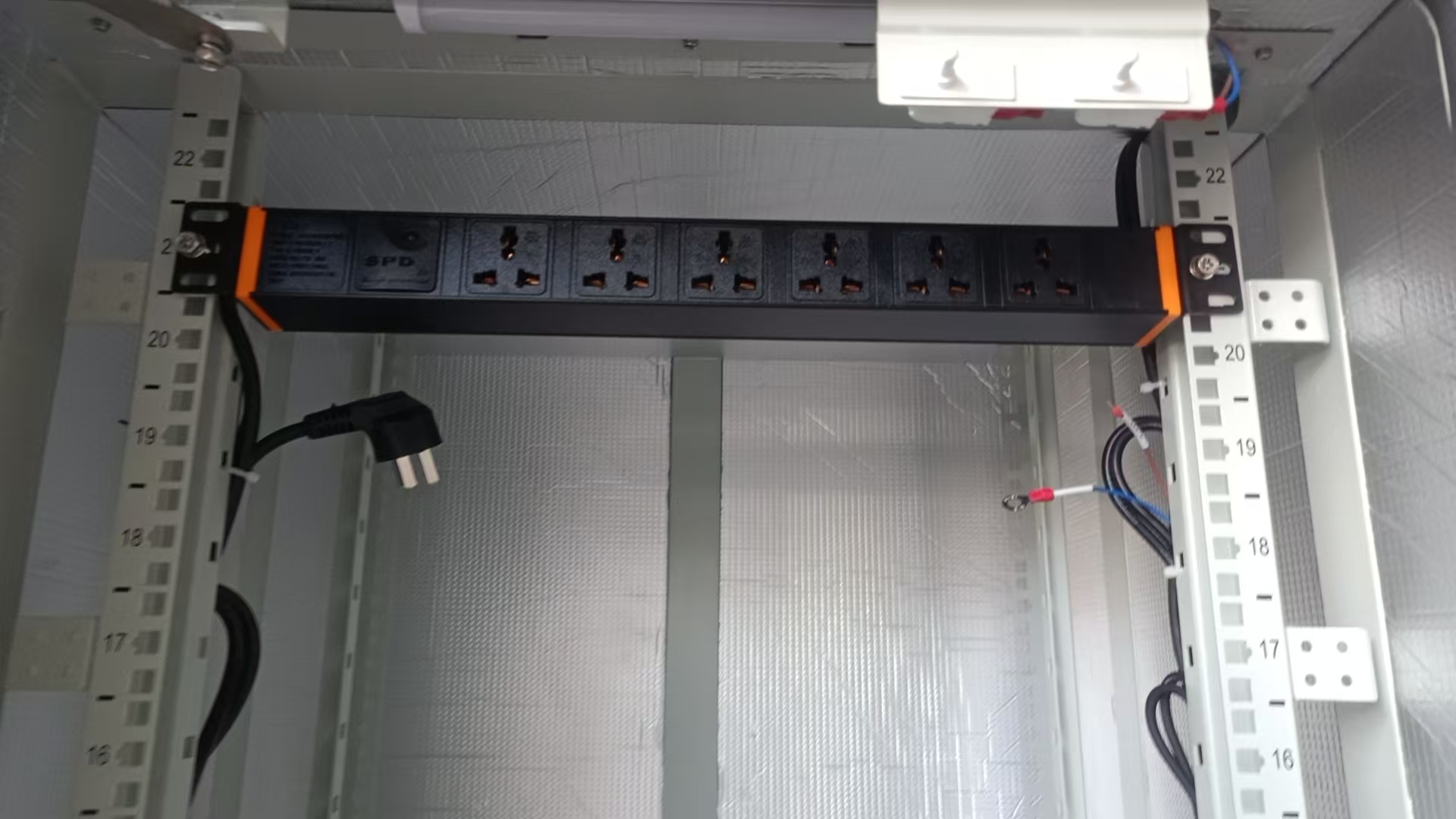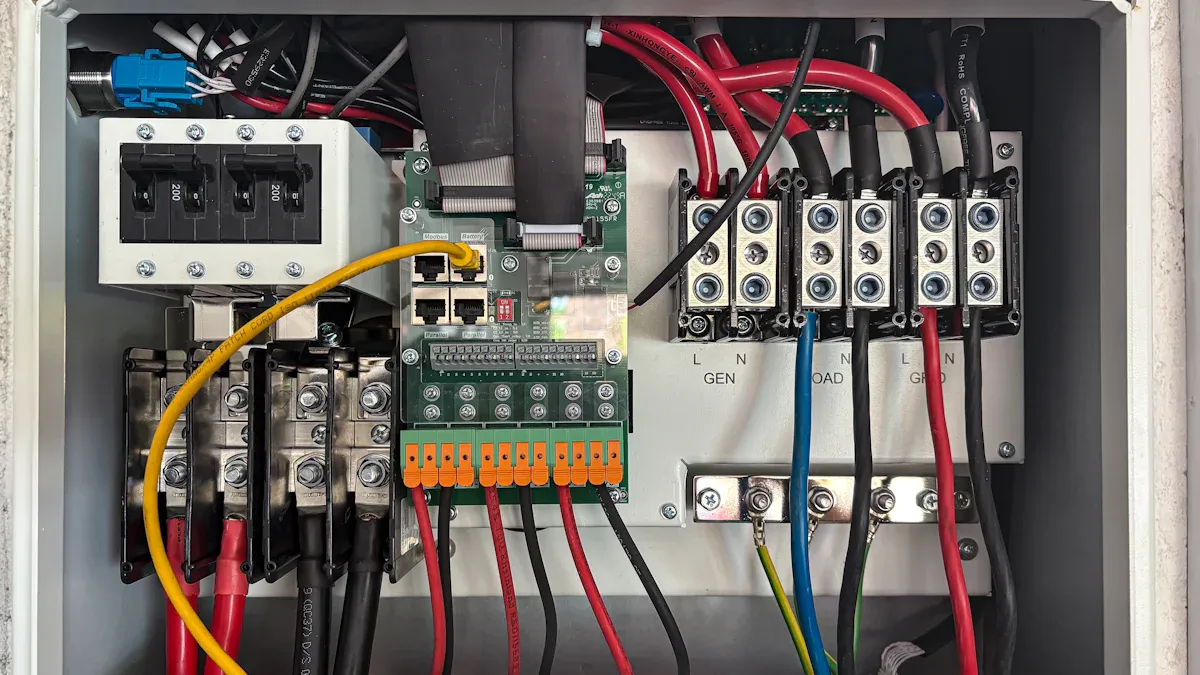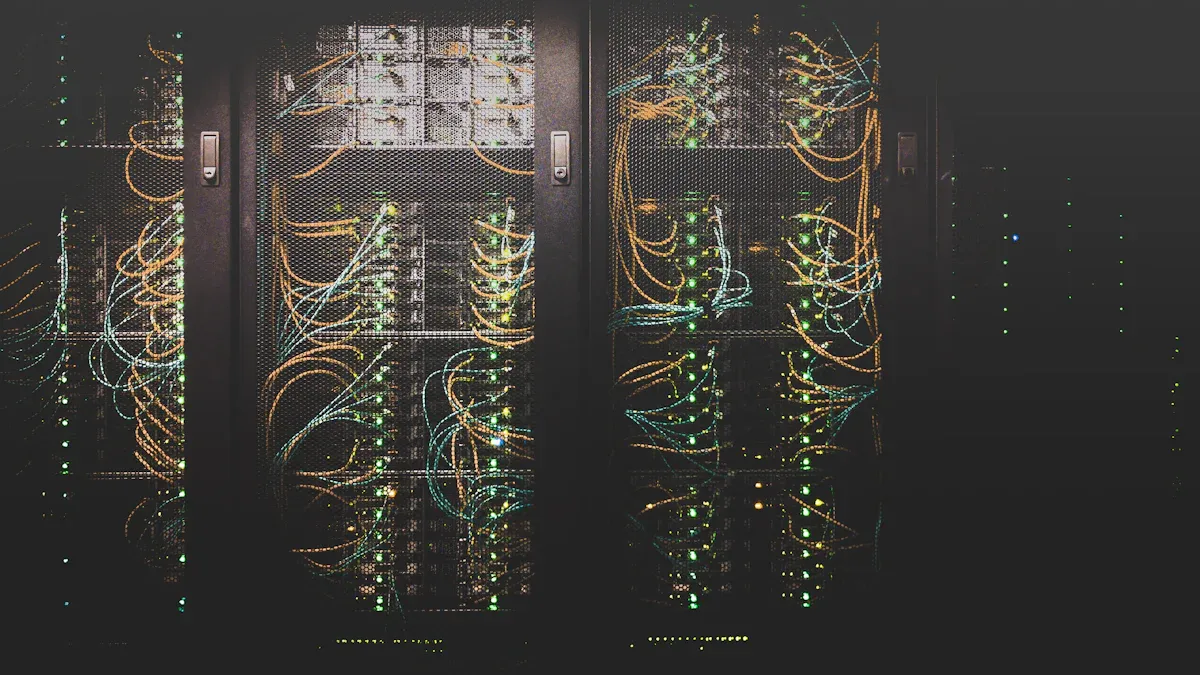How to Evaluate and Choose an ESTEL Power Distribution Unit for Efficiency

Choosing the right power distribution unit is crucial for ensuring efficiency in your data center. A well-designed PDU improves energy management and reduces downtime. It distributes power effectively across all equipment, preventing overloads and optimizing operations. ESTEL PDUs stand out for their ability to meet the demands of modern centers. These units combine advanced technology with reliability, helping you maintain uninterrupted performance while supporting scalability. By selecting an ESTEL PDU, you align your data center with the latest standards in power distribution and efficiency.
Key Takeaways
Check how much power your data center needs. Pick a PDU that fits your equipment to avoid problems and keep things running smoothly.
Choose a PDU that saves energy. Energy-saving models can cut electricity costs and help the environment.
Find PDUs with smart monitoring tools. These tools show real-time power use and help stop equipment issues.
Think about future needs when picking a PDU. Get one that can handle more power as your system grows.
Make sure the PDU has proper certifications. Certified PDUs are safe, reliable, and meet industry rules.
Understand Your Data Center's Power Distribution Needs

Assessing Power Capacity for Your PDU
Understanding the power capacity of your power distribution unit is essential for ensuring reliable operations in server rooms and data centers. Each PDU must meet the power requirements of your IT equipment rack power solution without exceeding its capacity. Overloading a PDU can lead to equipment failures and downtime, which disrupt operations and increase costs.
Effective capacity planning involves evaluating the power and cooling systems that support your IT equipment. This ensures your rack power distribution unit can handle the load while maintaining efficiency. For example, industry benchmarks highlight the importance of selecting a PDU with the right power rating. Smaller setups often use 15A PDUs, while moderate power needs are met with 20A units. High-density data centers, especially those handling AI workloads, may require PDUs rated up to 100A. Following the 80% rule—using only 80% of the PDU's maximum load—helps avoid overloads and ensures reliability.
Global energy consumption statistics emphasize the importance of evaluating power distribution needs. Data centers accounted for about 4% of global energy usage in 2023, with energy demand projected to rise from 460 terawatt-hours (TWh) in 2022 to 1,000 TWh by 2028. This underscores the need for efficient power management to reduce energy consumption and support sustainability.
Power Rating | Description |
|---|---|
15A | Common for smaller setups, suitable for low power consumption devices. |
20A | Standard for moderate power needs, often used in office environments. |
30A | Ideal for higher power requirements, supports more devices. |
Up to 100A | Suitable for high-density data centers, especially for AI workloads. |
80% Rule | Recommended maximum load to avoid overloads and ensure reliability. |
Selecting the optimal power capacity for your PDU ensures your data center operates efficiently and avoids unnecessary risks. By carefully assessing your power requirements, you can maintain uninterrupted performance and reduce energy waste.
Voltage and Phase Compatibility in Power Distribution
Voltage compatibility plays a critical role in efficient power distribution. Your PDU must match the voltage and phase requirements of your IT equipment to prevent operational issues. Mismatched voltage can lead to equipment damage, reduced efficiency, and increased energy costs.
Modern server rack power distribution units are designed to handle varying voltage and phase configurations. For example, decentralized power sources like PV inverters or battery energy storage systems (BESS) often require a power rating of 10 kVA. These systems benefit from advanced features such as switching frequencies of 10 kHz, DC-link voltages of 700 V, and total harmonic distortion (THD) below 3.75%. Such specifications ensure high power quality and efficient operation.
Specification | Description |
|---|---|
Power Rating | 10 kVA, suitable for small to medium decentralized power sources like PV inverters or BESS. |
Switching Frequency | 10 kHz, standard for efficiency and harmonic mitigation. |
DC-Link Voltage | 700 V, typical for grid-tied PV inverters. |
Control Update Time | 100 ms, essential for rapid response in voltage compensation. |
Total Harmonic Distortion (THD) | Less than 3.75%, important for maintaining power quality. |
Modulation Scheme | PWM (Pulse Width Modulation), known for reducing THD and improving dynamic response. |
Four-Leg Inverter Advantage | Allows independent control of each phase current, enhancing voltage balancing capabilities. |
The growing complexity of data centers demands PDUs that support advanced voltage compatibility features. For instance, four-leg inverters allow independent control of each phase current, improving voltage balancing and ensuring stable power distribution.
By prioritizing voltage compatibility and phase alignment, you can optimize power distribution and protect your IT equipment. This approach minimizes energy waste and ensures your server rooms operate at peak efficiency.
Key Factors to Buying a PDU for Your Data Center
Energy Efficiency in ESTEL PDUs
Energy efficiency is one of the most critical aspects when selecting a power distribution unit for your data center. ESTEL PDUs are designed to minimize power consumption while maximizing performance. By choosing energy-efficient PDUs, you can significantly reduce electricity costs. For instance, the levelized cost of saved electricity ranges from 1.2 to 8.6 cents per kWh. This translates to substantial savings over time, especially for large-scale operations.
Efficient PDUs also generate less heat, which reduces the strain on cooling systems. This not only lowers operational costs but also extends the lifespan of your equipment. Advanced PDUs have contributed to a 14% reduction in heat rates at fossil-fueled plants and a 9% decrease in power transmission losses since 2002. Optimized data centers using these units have reported up to a 20% reduction in overall energy consumption.
💡 Tip: Investing in energy-efficient PDUs not only saves money but also supports sustainability goals by reducing your data center's carbon footprint.
Scalability and Flexibility in Power Distribution
As your data center grows, your power distribution system must adapt to increasing demands. Scalable PDUs, like those offered by ESTEL, provide the flexibility needed to meet these challenges. For example, the Powersmiths RPP allows for flexible configurations, ensuring your power distribution system can handle future expansions. Its compact design optimizes space utilization, which is crucial in high-density environments.
Scalable PDUs also come with robust electrical protection features. These features prevent downtime caused by power issues, ensuring uninterrupted operations. Integration with advanced monitoring systems, such as Socomec DIRIS Digiware BCM, enhances real-time energy tracking. This level of adaptability ensures your data center remains efficient and reliable, even as your power needs evolve.
🔧 Note: When planning for scalability, consider PDUs with modular designs. These units allow you to add capacity without replacing the entire system, saving both time and money.
Monitoring and Management Features in a PDU
Modern PDUs come equipped with advanced monitoring and management features that enhance operational efficiency. Real-time monitoring provides immediate insights into power usage, helping you identify inefficiencies and optimize power consumption. Remote management capabilities allow you to control and monitor your PDU from anywhere, reducing the need for on-site interventions.
Environmental monitoring is another valuable feature. It tracks conditions like temperature and humidity, preventing equipment failures caused by unfavorable environments. Metered PDUs, when paired with optimization strategies, can increase energy efficiency by up to 20%. Alerts for abnormal conditions enable quick responses, minimizing downtime and maintaining optimal performance.
Feature | Benefit |
|---|---|
Real-time monitoring | Provides immediate insights into power usage, helping to identify inefficiencies. |
Remote management | Allows operators to manage PDUs without physical presence, enhancing flexibility. |
Environmental monitoring | Monitors conditions like temperature and humidity, preventing equipment failures. |
Metered PDUs | Coupled with optimization strategies, can increase energy efficiency by 20%. |
Alerts for abnormal conditions | Enables quick responses to prevent downtime and maintain optimal equipment performance. |
📈 Insight: Facilities with backup power configurations and advanced monitoring systems experience a 25% increase in operational reliability. Remote monitoring services also improve maintenance response times by 40%, ensuring your data center operates at peak efficiency.
Evaluating the Reliability of ESTEL Power Distribution Units

Build Quality and Material Durability
The build quality of a power distribution unit directly impacts its reliability and lifespan. ESTEL PDUs are engineered with robust materials that meet stringent industry standards. These units are designed to withstand the demanding environments of data centers, ensuring reliable power distribution even under heavy loads.
Several industry standards validate the durability of ESTEL PDUs. For instance:
ANSI/TIA-569-B-2004 ensures the structural integrity of components used in power distribution systems.
BS 6701:2004 emphasizes the use of high-quality materials to enhance performance and durability.
These standards highlight the meticulous engineering behind ESTEL PDUs, making them a dependable choice for your data center. Additionally, their advanced circuit protection features safeguard against electrical faults, further enhancing reliability. By choosing a PDU with proven durability, you minimize the risk of equipment failure and ensure uninterrupted operations.
Certifications and Standards for PDUs
Certifications play a crucial role in verifying the safety, efficiency, and reliability of a PDU. ESTEL PDUs comply with globally recognized certifications, ensuring they meet the highest standards for power distribution. These certifications validate their performance in critical areas such as electrical safety, environmental impact, and electromagnetic compatibility.
Certification | Description |
|---|---|
ISO9001 | Ensures consistent manufacturing processes for quality assurance. |
UL | Guarantees compliance with electrical safety standards. |
RoHS | Addresses environmental impact and safety. |
CE | Ensures compliance with health, safety, and environmental protection standards. |
VDE | Validates electrical safety and performance standards. |
In addition to these, ESTEL PDUs also hold certifications like the IEC CB Scheme and FCC Compliance. These certifications ensure the units meet international safety standards and do not interfere with other devices. Features like circuit protection and electromagnetic shielding further enhance their reliability. By selecting a certified PDU, you gain peace of mind knowing your power distribution system adheres to the highest safety and performance benchmarks.
🔒 Tip: Always verify the certifications of a PDU before purchasing. Certified units not only ensure safety but also provide long-term cost savings by reducing maintenance needs.
PDU Buying Guide: Budget and Cost Considerations
Balancing Initial Costs with Long-Term Savings
When purchasing a power distribution unit, balancing upfront costs with long-term savings is essential. While some PDUs may seem expensive initially, their energy efficiency and reliability can lead to significant cost reductions over time. For example, intelligent PDUs often have higher initial prices but provide long-term savings by lowering utility bills and reducing maintenance needs. These units help identify inefficiencies, allowing you to optimize power distribution and cut operational expenses.
A comparative analysis highlights the benefits of investing in efficient systems. A Saudi utility company signed a 20-year Power Purchase Agreement (PPA) for solar energy at a fixed rate of $0.016 per kWh. This decision reduced electricity procurement costs by 25% compared to fossil fuel-based power generation. Similarly, energy-efficient PDUs can stabilize your data center's budget by minimizing energy waste and insulating you from fluctuating electricity prices.
Factor | Description |
|---|---|
Initial Investment | Intelligent PDUs may have higher upfront costs but offer long-term savings. |
Operational Costs | Energy-efficient PDUs lower utility bills and identify inefficiencies. |
Maintenance and Reliability | Reliable PDUs reduce downtime and maintenance costs. |
Electrical systems, including PDUs, account for 40% to 45% of total data center costs. Their cost ranges from $280 to $460 per square foot. By choosing the right PDU, you can ensure efficient power distribution while keeping long-term expenses under control.
Warranty and Support Services for ESTEL PDUs
Warranty and support services play a crucial role in your PDU buying decision. A comprehensive warranty ensures that your investment remains protected against manufacturing defects and performance issues. ESTEL PDUs come with robust warranty options, giving you peace of mind and reducing unexpected repair costs.
Support services are equally important. ESTEL offers 24/7 customer assistance, ensuring quick resolutions to any technical issues. Their team provides guidance on installation, maintenance, and troubleshooting, helping you maintain uninterrupted operations. Access to reliable support minimizes downtime and extends the lifespan of your PDU.
When evaluating warranty and support services, consider the following:
Warranty Duration: Longer warranties provide better protection for your investment.
Service Availability: Ensure round-the-clock support to address emergencies.
Technical Expertise: Choose a provider with a skilled support team for effective problem-solving.
By prioritizing warranty and support services, you can enhance the reliability of your power distribution system and safeguard your data center's efficiency.
Choosing the right power distribution unit is essential for optimizing your data center's performance. ESTEL PDUs stand out for their efficiency, reliability, and scalability. They can enhance operational efficiency by up to 30% and ensure 99.999% uptime availability with dual-source configurations. The growing market for PDUs, projected to reach USD 4.08 billion by 2030, reflects their importance in modern data centers. By consulting ESTEL experts, you can select a PDU tailored to your specific needs, ensuring seamless power distribution and long-term success.
FAQ
What is the primary purpose of a Power Distribution Unit (PDU)?
A PDU distributes electrical power to multiple devices in your data center. It ensures efficient power management, prevents overloads, and supports the smooth operation of IT equipment.
How do ESTEL PDUs improve energy efficiency?
ESTEL PDUs reduce energy waste by optimizing power distribution. Their advanced features, like real-time monitoring and low heat generation, help you lower electricity costs and achieve sustainability goals.
💡 Tip: Use PDUs with energy monitoring to track and reduce unnecessary power consumption.
Can I use an ESTEL PDU for high-density data centers?
Yes, ESTEL PDUs are designed for scalability. They support high-density environments with features like modular designs and high power ratings, ensuring they meet the demands of growing data centers.
What certifications should I look for in a PDU?
Look for certifications like ISO9001, UL, CE, and RoHS. These ensure the PDU meets safety, quality, and environmental standards, giving you peace of mind about its reliability.
How does remote monitoring benefit my data center?
Remote monitoring allows you to track power usage and environmental conditions from anywhere. It helps you identify inefficiencies, respond quickly to issues, and reduce downtime.
📈 Insight: Data centers with remote monitoring experience up to 40% faster maintenance response times.
See Also
Ensuring Correct Voltage Levels in ESTEL Communication Cabinets
Understanding ESTEL PDUs and Their Importance in Data Centers
Selecting Optimal Cooling Solutions for ESTEL Telecom Cabinets
CALL US DIRECTLY
86-13752765943
3A-8, SHUIWAN 1979 SQUARE (PHASE II), NO.111, TAIZI ROAD,SHUIWAN COMMUNITY, ZHAOSHANG STREET, NANSHAN DISTRICT, SHENZHEN, GUANGDONG, CHINA


